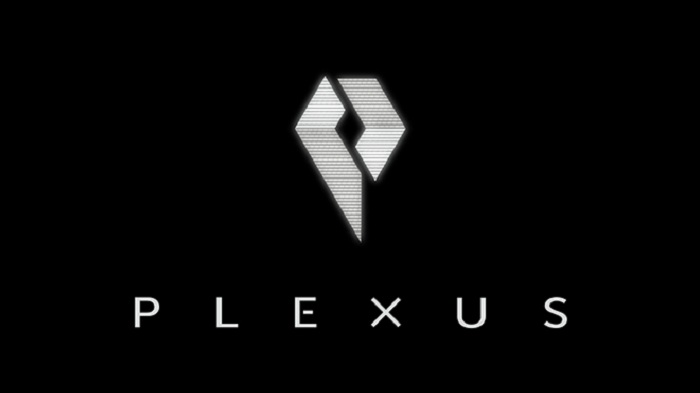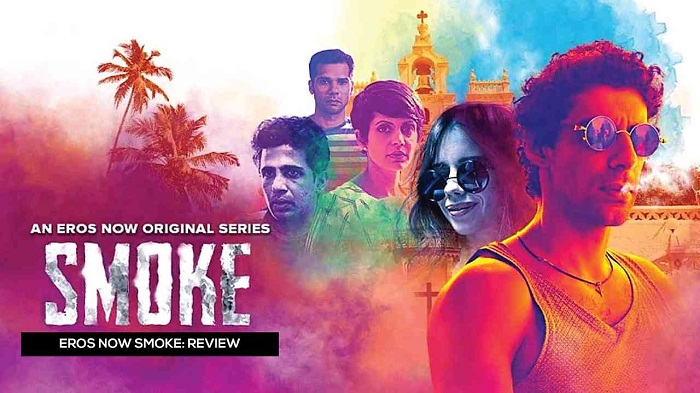 Name : Plexus Motion
Name : Plexus Motion
About : Run by director duo Vijesh Rajan and Yashoda Parthasarthy, Plexus studio specialising in leading edge Visual Effects (VFX), seasoned Animation and carefully crafted Title Sequence Design. Plexus was initially conceived as a cloud based studio, as the permanent members were only two of them. They came up with a cloud-based pipeline for working with over 50 Indian and international freelance artists of various specialisations to meet their client’s animation and VFX requirements.
Location : Mumbai
Projects : Sacred Games (title sequence), Smoke (title sequence), Gangs of Wasseypur (title sequence), Angry Indian Goddesses (title sequence), Ok Kanmani (title sequence), Ghoul (VFX + title sequence), Leila (VFX), Gustaakh (animated short film – concept, direction and VFX), Ok Jaanu (title sequence), Mirzapur (title sequence), Detective Byomkesh Bakshy (Promo Packaging)
1. What are the current trends you’re seeing in the Indian Animation space?
The current Indian Animation space looks very promising. Not only are there several independent studios coming up with very talented teams, even mainstream feature films and series is embracing animation as an integral medium of story telling. Lately, Netflix’s Ghost Stories used 2D animation very effectively in their title sequence. But what’s great is that it’s not just commercial avenues where you see animation being used.
We loved that 2D animated short films like Death of a Father and Wade are being independently produced in India, bringing a very fresh and youthful perspective to short fiction narratives. Lamput (Cartoon Network) and Andy Pirki (Pogo) are great examples of how global the quality of Indian animation is. We were even brimming with happiness to hear about Punyakoti – the world’s first Sanskrit feature length animated film, which was again independently produced. So you can see that when it comes to original content, the independent studios are clearly leading the way. We hope that theatrical film financers and production houses also start seeing the real power of animation storytelling and support the animation industry by financing more animation rooted ideas.
With the OTT boom bringing international subscription based video platforms like Netflix, Amazon Prime Video and others, we really hope to see more original animated content from India. That’s why Plexus has taken it upon itself to develop original content with two series and one feature film currently in the pipeline with a special emphasis on VFX and animation based storytelling.
 2. What are the challenges in this ecosystem?
2. What are the challenges in this ecosystem?
Animation is never taken seriously as a storytelling device. It’s always brushed off as “just for kids”. This thought process has been quite damaging to our industry and has been responsible for pushing our skilled artists behind by almost a decade. Disney, which is currently the biggest studio in the world, started off with traditional cell animation-based feature presentations. Back when they just started out, they were only making content for children – but as the years passed, they realized that their audience is much bigger – and they came to understand the universal appeal of creating animated content. Just like live action filmmaking with actors on location, animation is just a device of storytelling – but unlike live action storytelling, animation is not restricted with the rules of shooting with real people – there is no real physics, no gravity – no rules. So you can push the limits of visual storytelling literally as far as your mind bends – and in the process, create a much stronger emotional impact on the audience. But this understanding and approach only comes from exposure and learning – which is sadly lacking among the filmmakers in India.
Also due to the lack of precedents, producers are often surprised by the budget requirements for creating any form of animated content. This mainly forms the second biggest challenge in our industry – sustainability. Even if production houses are brave enough to think of using animation in their productions, they don’t understand how much work goes into building each frame of animation – how many people are involved and how much time it takes – so they most often only have half or quarter the budget that is actually needed to accomplish the animated sequence. Scheduling and timelines are also often quite unrealistic, due to which the quality of animation / motion design suffers a lot.
3. What’s one message you’d like to share with the aspiring enthusiasts?
We would like to tell all enthusiasts to not give up and try and arrive at their own unique style. There is a serious dearth of good artists while there is an equally high demand for motion design. When Plexus started, we had decided to create our own niche and do stylized unique title sequence which would enable us to flex our creative muscles. At that point of time Netflix, Amazon and other OTT platforms hadn’t started to India. Yet with our persistence, we were able to create a niche of designing animated, conceptual title sequences for films – and it paid off well because we were the first to be approached when the OTT boom happened. I would also suggest younger artists to be a little selective about the projects that they do as it helps to distinguish them from the rest of the crowd. Many artists also don’t focus enough on the need for a good pipeline, but having a strong foundation/ pipeline while working as a professional really stands out. There will be good days and bad days and being in a creative field means that the challenges that one faces with every project is often unpredictable. So having a very professional approach and having a strong foundation helps in the long run while dealing with these challenges.
